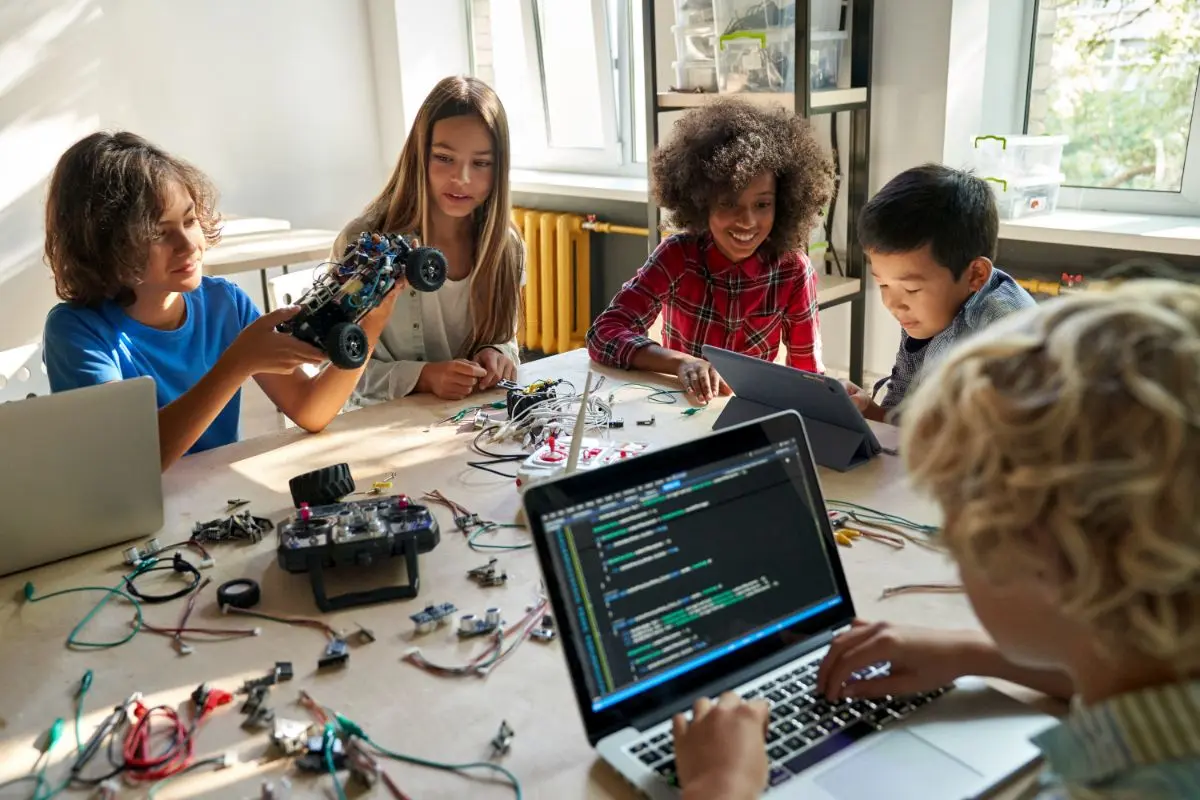How AI Disruption in Education is Changing Schools

AI disruption in education is transforming the way we learn and teach. With advancements in artificial intelligence, schools are becoming more personalized, efficient, and accessible. The future of education is evolving, and AI is playing a pivotal role in reshaping the landscape. But how exactly is this disruption affecting schools? Let’s explore.
The Impact of AI Disruption on Education
AI is revolutionizing education by automating processes, providing personalized learning experiences, and enabling teachers to focus on more critical tasks. In 2030, AI will be a cornerstone of the education system, with advancements creating more innovative classrooms and more effective teaching methods.
Personalized Learning at Scale
One of the most exciting ways AI disruption in education is making an impact is through personalized learning. AI tools can analyze each student’s strengths and weaknesses and then create customized learning plans based on those insights.
“AI allows us to tailor education to individual needs, ensuring no student is left behind,” says Dr. Lucy Adams, an expert in educational technology.
These tools adapt in real time, providing feedback, suggestions, and additional resources to help students progress at their own pace. This flexibility is critical for improving learning outcomes.
Automating Administrative Tasks
AI is automating repetitive administrative tasks that have traditionally consumed a significant amount of teachers’ time. Tasks such as grading, monitoring student progress, and even creating lesson plans can now be automated by AI.
This change means that teachers will have more time to interact with students, develop creative lesson plans, and focus on their core teaching responsibilities.
AI Tools Enhancing Classroom Interaction
AI-powered tools are also enhancing how students and teachers interact in the classroom. From intelligent assistants to virtual tutors, AI is creating more dynamic and engaging learning experiences.
Virtual Teaching Assistants
AI-powered virtual assistants are becoming more common in classrooms. These tools can answer students’ questions, provide additional resources, and even guide them through complex topics.

Augmented and Virtual Reality (AR/VR)
Imagine stepping into a virtual world where you can explore historical events or conduct scientific experiments in a fully immersive environment. AI will power augmented and virtual reality experiences, making learning more engaging, interactive, and hands-on.
Case Studies: AI in Education Today
Case Study 1: AI at the University of Arizona
The University of Arizona has implemented AI-driven tools to help students with their coursework. By analyzing individual learning styles, the system provides personalized learning experiences, enabling students to succeed in challenging subjects. Since its introduction, the university has reported a 20% increase in student engagement and a 15% improvement in academic performance.
Case Study 2: AI-Powered Tutoring in K-12 Schools
In K-12 education, companies like DreamBox Learning have been providing AI-powered tutoring solutions that cater to the individual needs of students. This tool assesses a student’s performance in real time and offers personalized guidance, helping students grasp complex concepts more effectively. These tools have proven successful in improving math scores and student retention rates.
The Challenges of AI Disruption in Education
While the benefits of AI in education are clear, schools must address several challenges to embrace this disruption fully.
Ethical Concerns and Data Privacy
AI systems collect vast amounts of data on students, raising privacy concerns. Schools will need to implement strong data protection policies to ensure that student information is kept secure and used responsibly.
Teacher Resistance to AI Tools
Some educators may resist using AI tools, fearing that technology could replace their jobs or change traditional teaching methods. It will be essential for schools to provide proper training and ensure that AI supports teachers rather than replacing them.
Access to Technology
In some regions, students may not have access to the devices or internet connections necessary to benefit from AI learning tools fully. Addressing this digital divide will be crucial for ensuring that all students have equal opportunities to benefit from AI in education.
Future Outlook: What to Expect from AI in Education
As AI continues to evolve, its role in education will only expand. By 2030, AI will be integrated into nearly every aspect of the education system.
Smarter Classrooms
Imagine classrooms that can automatically adjust lighting, temperature, and even lesson content based on student needs. AI will create smart classrooms that are tailored to optimize learning conditions for every student.
Predictive Analytics for Student Success
AI will also be able to predict student outcomes, allowing educators to intervene early when a student is struggling. By analyzing data from previous years, AI tools can provide valuable insights that help prevent students from falling behind.
Lifelong Learning with AI
AI will make continuous learning a reality for people of all ages. Whether you’re looking to learn a new skill or pursue a degree, AI will offer personalized pathways for lifelong education, ensuring that everyone has access to knowledge at any stage of life.

Conclusion: AI’s Role in the Future of Education
AI disruption in education is here to stay, and it’s changing how we learn, teach, and interact in the classroom. From personalized learning experiences to more innovative classrooms, AI is reshaping the educational landscape. While challenges remain, the benefits of AI in education are undeniable. As AI continues to evolve, its impact will only grow, helping to create a more efficient, engaging, and inclusive education system for the future.
Also Read: AI in Education: Transforming the Future of Learning
Frequently Asked Questions (FAQs)
1. How is AI disrupting education?
AI is disrupting education by personalizing learning, automating administrative tasks, and enhancing classroom interactions with tools like virtual tutors and intelligent assistants.
2. Will AI replace teachers in the future?
No, AI will not replace teachers. Instead, it will support teachers by automating administrative tasks and providing personalized learning experiences for students.
3. How can AI help students learn better?
AI helps students by providing tailored learning plans, real-time feedback, and additional resources based on individual needs, which improves engagement and learning outcomes.
4. What are the benefits of AI-powered classrooms?
AI-powered classrooms offer personalized learning experiences, automate administrative tasks, and foster interactive learning environments utilizing technologies such as AR/VR.
5. Are there any challenges with AI in education?
Yes, challenges include data privacy concerns, teacher resistance, and limited access to technology, which can prevent some students from benefiting from AI tools.
6. How is AI improving student engagement?
AI enhances student engagement by providing personalized learning paths, real-time feedback, and interactive tools that make learning more relevant and engaging for each student.
7. What is the future of AI in education?
The future of AI in education includes more innovative classrooms, predictive analytics for student success, and lifelong learning opportunities, making education more accessible and practical.

Similar Posts
Can Docparser’s OCR Magic Transform Your PDF Workflow?
Latest Update: Reddit Stock Emerges as Top Stock Pick on App, Surpassing Nvidia, and Tesla
7 Top Benefits of Homeschooling: Why It’s the Best Choice